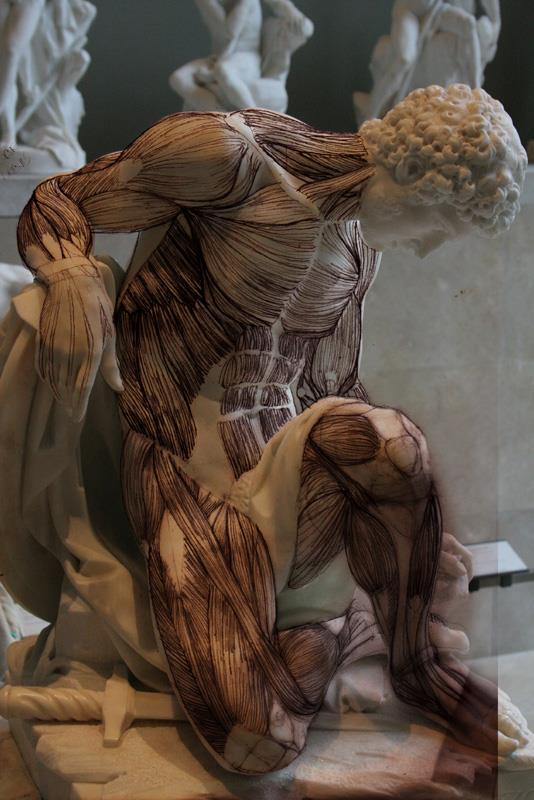Osteopathy works on 3 different systems: Mechanical, Circulatory and Neurological.

Art by Stuart Morris http://www.coroflot.com/stuartmorris/ecroche-study-of-musculature
Mechanical:
The best known benefit of osteopathy is its action on the musculoskeletal system and mainly on the joints. In fact, by gentle and specific manipulations, we work on mobility of all joints of the human body. We extend the joint’s concept to every space between two structures and not only between two bones. In these cases, we speak about sliding surfaces between two structures more than joints. Precisely, we can work on sliding surfaces involving organs, soft tissues, bones, vessels, nerves etc.
Circulatory:
All manipulations serve as purpose to liberate mobility for vessels and to create space allowing free circulation of body fluids such as blood and lymph as well as cerebrospinal fluid contained in the skull and spine. We also need to acknowledge that the hormonal system is carried by blood from endocrinal glands to their target cells. Osteopathic techniques work directly on the vessels and on the tissues surrounding them.
Neurological:
As for the circulatory system, when an area finds free mobility again, the vessels and nerves can move properly and thus do their work efficiently. Osteopathy works also on the nervous system by direct manipulations on the nerve roots and pathways. We also use the neurological reflex effect of vertebral manipulations to normalize areas in relation to vertebral level since all peripheral nerves start in the spinal cord. In a nutshell, each and every manipulation has a neurological involvement due to the richness of the nervous system.
In order to keep an area totally functional, the position of organs or structure is not the most important, but rather its free and proper mobility! This principle applies to the whole body.
